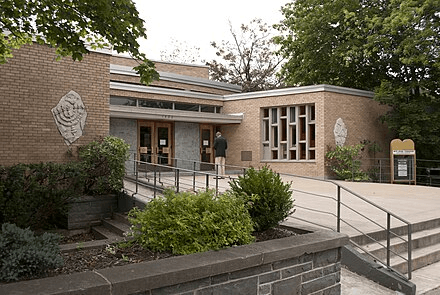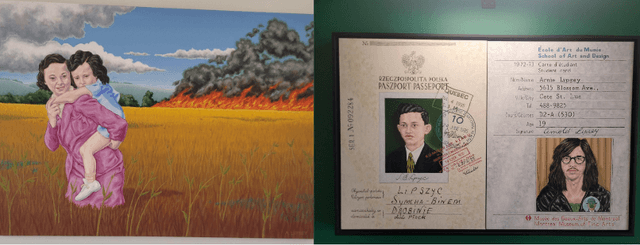Klezmer is traditional Ashkenazi Jewish music, typically played at weddings and other simchas. However, self-described “Club Klezmer” band the Red Hot Chili Schleppers are not your great-great-zayde’s group of itinerant klezmorim. The Montreal-based group is currently made up of five members: Eddie Rosen on fiddle, Ido Leibowitz on clarinet, Shai Rotbard-Seelig on tuba, Carmen Mancuso on accordion, and Ezra Zabawny-Gilman on the drums. Recently, they were heard at Nu Magazine’s in-print launch party on January 23rd playing top klezmer hits such as “Odessa Bulgarish” and “Bulgar a la Naftule.” Two of the Schleppers, Rosen and Rotbard-Seelig, took time out of their hectic schedules of rehearsals and other klezmer madness to talk to Nu.
The Red Hot Chili Schleppers got their start as accompaniment to The Suicide, a play that Mancuso was directing. The play is set in Russia with a tuba-playing protagonist, so when Mancuso approached Rotbard-Seelig about a musical score, they agreed that klezmer would be a perfect fit. Rotbard-Seelig played the tuba and Mancuso the accordion, but they still needed either a clarinet or violin, which they found in clarinetist and former member Maxim Couillard. After the play’s successful run, Mancuso, Couillard, and Rotbard-Seelig continued to play together. One day Rosen overheard Couillard and Mancuso in the Schulich School of Music practice rooms and joined them. They jammed together, and after that, the group solidified more formally and started gigging. Later on, Rotbard-Seelig invited Zabawny-Gilman to join and Leibowitz hopped in on clarinet after Couillard graduated to fill out the ensemble.
Rosen and Rotbard-Seelig highlighted two of the band’s core goals: to make people dance and to blend traditional klezmer tunes and styles with modern beats and rhythms. “This is music that is made for dancing,” said Rotbard-Seelig, explaining that the songs are often named after their associated dance. There are traditional Ashkenazi dances, but ultimately the music goes with “whatever type of dance you’re doing,” Rosen told Nu.
The Red Hot Chili Schleppers use a balance between tradition and modernity that results in just the right amount of old-and new-world sound. The Schleppers energize the genre by using newer instruments such as the drums, playing with arrangements, and incorporating beats that are unconventional in traditional klezmer, like reggaeton and disco. Still, the band honours tradition by pairing their more experimental renderings with classic rhythms and the expected clarinet and fiddle solos. For the Schleppers, roles of tradition and instrumentation are not hard and fast—the band often has tuba and accordion solos as well, reinforcing collaboration and improvisation as an integral part of this music.
Ultimately, connection, both with their fellow klezmorim and the audience, is key to the band’s vision. Community has always been the heart of klezmer music, especially with its basis in a community-rooted faith like Judaism.
For Rosen, klezmer is their life.“It’s just so hard to say. Because I feel like all of it just comes together. I don’t know if there’s one aspect that you can really extract from another,” they said. “Because it is the performance. It’s the connection with the audience and with your fellow bandmates.”
Rotbard-Seelig placed a similar emphasis on connection. He spoke to the importance of not only feeling connected with the audience but also sharing energy through the music.
“I think the best part is you feel the energy from all the people around you, and you get to share your energy through your instrument,” Rotbard-Seelig said. “And that–not just with this band but with all the music that I play–is the most important thing. Sharing the energy, sharing the love, sharing the soul through the music.”
Nu looks forward to seeing the Schleppers continue to keep this tradition of community alive in whatever blend of old and new they come up with next.
Powered by Froala Editor






